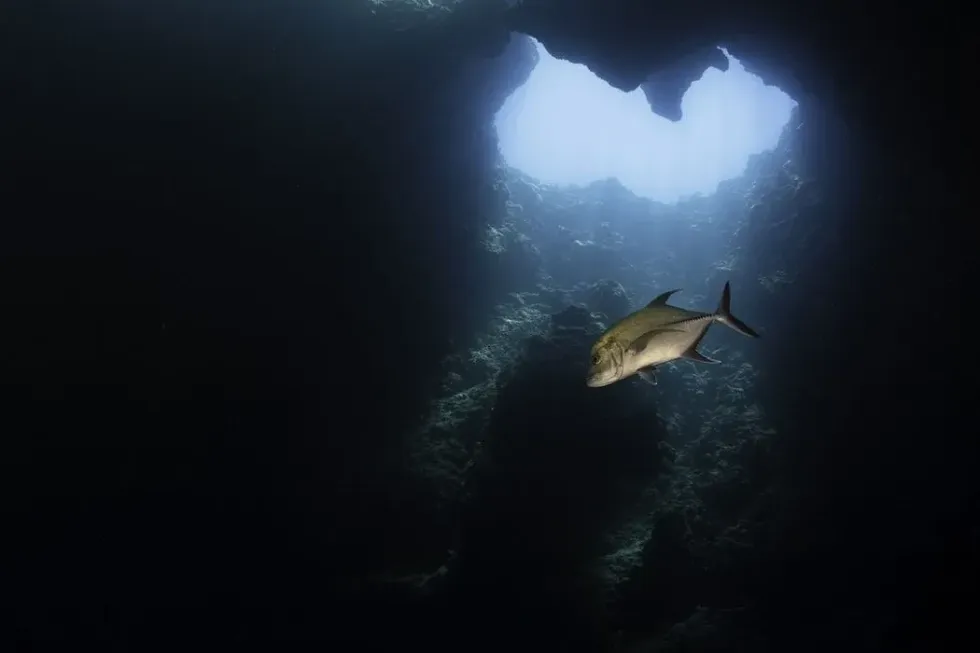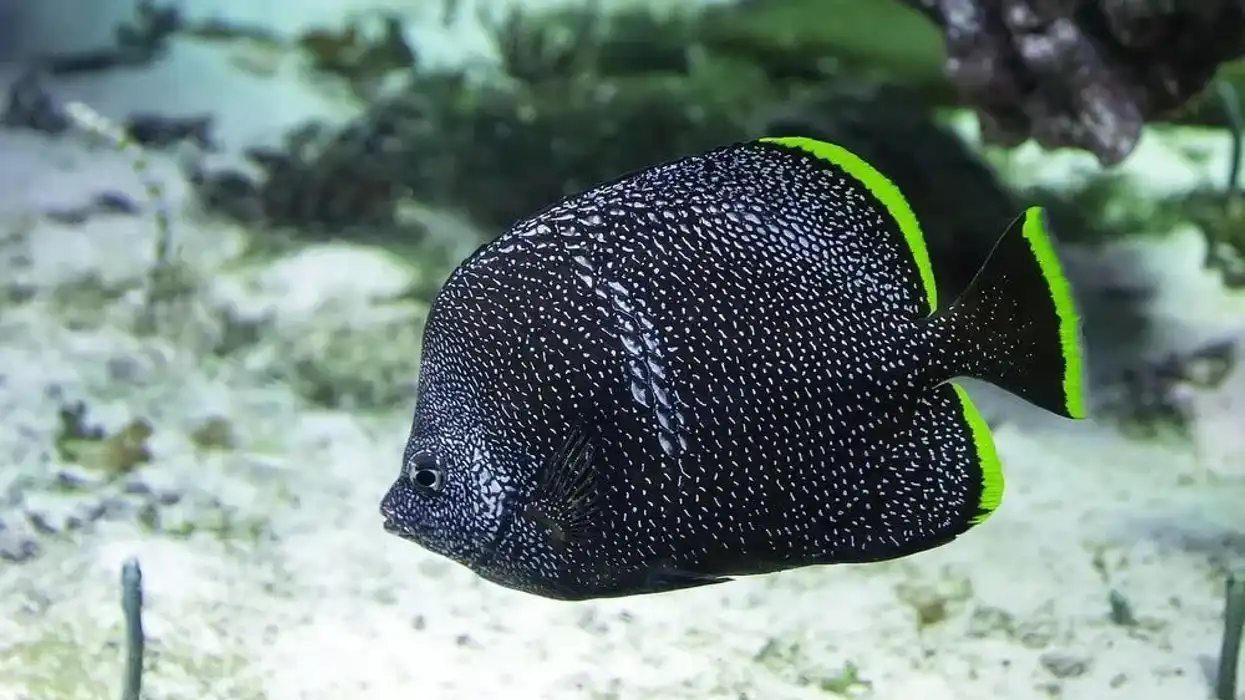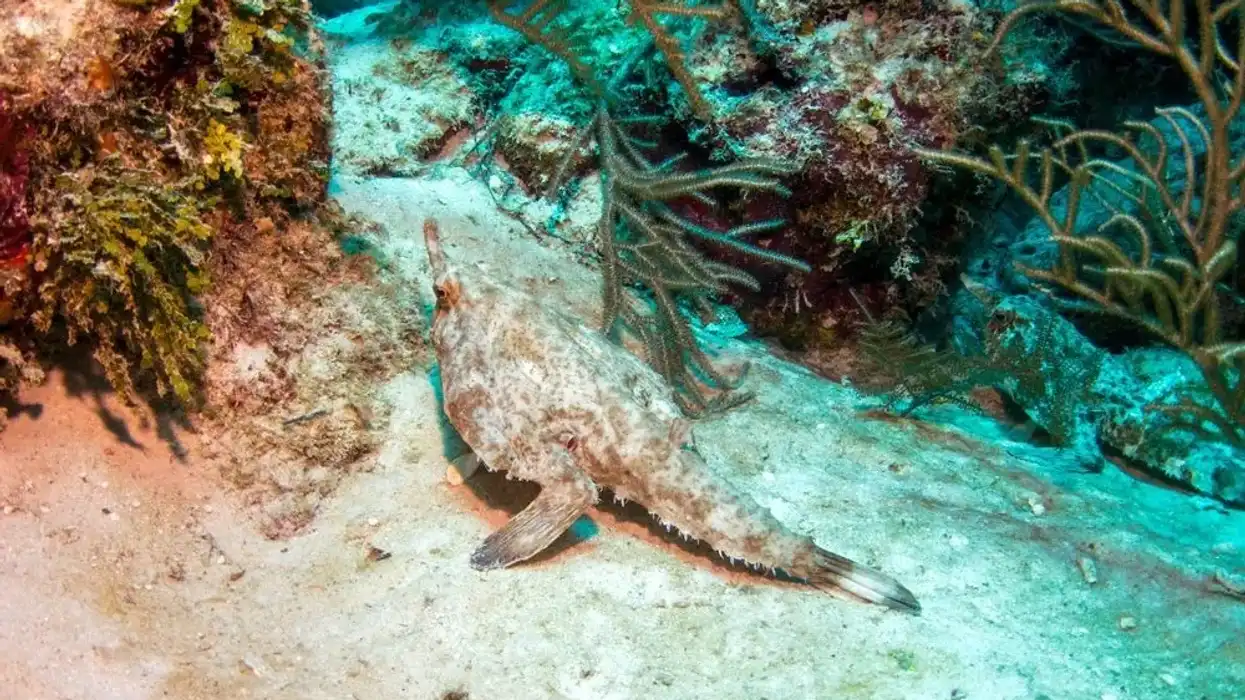Humpback anglerfish (Melanocetus johnsonii) are medium-sized deep-sea creatures found at depths of 6600 ft (2000 m) in open oceans. Its physical appearance has earned it the title of one of the ugliest animals on the planet, and these deep-sea anglerfish are considered top predators in their environment.
This species has developed some adaptations to survive without sunlight, including a spinal lure light exhibited by female humpback anglerfish, which they use to attract potential prey or a mating partner.
While the female species are larger and are predatory, males are smaller and are parasitic creatures. Other common names for this species are 'deep-sea anglerfish' and 'black seadevils'.
If you like reading this article about this sea creature, you may also want to check out our articles about the pumpkinseed sunfish and the longhorn cowfish.
Humpback Anglerfish Interesting Facts
What type of animal is a humpback anglerfish?
The humpback anglerfish is a kind of fish that is found in deep waters. This fish is one of 200 anglerfish species.
What class of animal does a humpback anglerfish belong to?
Popularly known as the 'deep-sea anglerfish', this fish belongs to the Actiopterygii class. These are ray-finned fish.
How many humpback anglerfish are there in the world?
There are no official records as to how many humpback anglerfish exist. Although, studies show that these creatures remain abundant in the deep sea.
Where does a humpback anglerfish live?
The M. johnsonii fish has a wide distribution and can be found almost anywhere in the world including the South China Sea, the East China Sea, and the Antarctic Ocean.
What is a humpback anglerfish's habitat?
The humpback anglerfish lives in the mesopelagic and bathypelagic zone of the ocean, at depths of 6600 ft (2000 m) or more. These fish live very deep in the ocean where it is dark and freezing and the sunlight is absent.
Who does humpback anglerfish live with?
These deep-sea creatures are solitary. Humpback anglerfish only come together in pairs during a short period for mating. After this, they separate and continue to live alone.
How long does a humpback anglerfish live?
It is quite difficult for experts to study the life cycle of the humpback anglerfish and the longevity of this specific species is still unknown. More generally, anglerfish are said to live up to 25 years.
How do they reproduce?
In the dark, a male humpback anglerfish follows a particular scent and the lure light of a female. They then partake in external fertilization, which means that they reproduce outside of their bodies.
The male hooks his teeth onto the female to drink her blood and then the female releases eggs into the seawater, which are fertilized by the male. After mating, the male leaves to find other female partners, which is quite a difficult task since they live alone in dark, deep sea waters.
What is their conservation status?
These fish are only found in deep-sea areas and are considered to be top predators in their natural environment. Therefore, the humpback anglerfish (M. johnsonii) is classified as a Least Concern species by the IUCN.
Humpback Anglerfish Fun Facts
What do humpback anglerfish look like?
Humpback anglerfish are typically dark in color, with a mix of brown, black, and gray shades. They have a soft and fleshy body structure, a huge face, and a large crescent-shaped mouth that is filled with large teeth.
Females have an almost vertical mouth with very long pointed teeth that enable them to prey on species even bigger than themselves. Their eyes and nostrils are also huge. Males are generally smaller than females.

*Please note that this is an image of a humpback fish, not a humpback anglerfish specifically. If you have an image of a humpback anglerfish please let us know at hello@kidadl.com
How do they communicate?
There are not many studies done on the behavior of these deep-sea anglerfish due to their complex environment. However, we know that the females exhibit a lure light on their head and spine, plus, they emit a specific scent to communicate to potential male partners.
The glowing lure light on their forehead is also used to attract prey. Males do not have this light apparatus so they use their large eyes and nostrils to locate their potential partner instead.
This lure-light characteristic makes female humpback anglerfish more dominant and means that they can ambush their prey. These creatures don't do much to catch prey, they would rather just wait for their prey victims to come closer to them.
How big is a humpback anglerfish?
Humpback anglerfish are a sexually dimorphic species, which means that there are notable differences between females and males aside from their sexual organs. The average female humpback anglerfish's body length can grow up to 7 in (18 cm). This is about 10 times bigger than males, who can only grow up to about 1.18 in (3 cm).
How fast can a humpback anglerfish swim?
With their weirdly round body shape, Melanocetus johnsonii fish are not very good swimmers. They cannot swim properly, instead, they just wobble in the water.
How much does a humpback anglerfish weigh?
A female deep-sea anglerfish weighs about 0.66 lb (300 g). A male fish, on the other hand, is notably smaller and much lighter.
What are the male and female names of the species?
There are no specific names for male and female humpback anglerfish, despite the differences in their body size. Both creatures are known as deep-sea anglerfish, or Melanocetus johnsonii in scientific terms.
What would you call a baby humpback anglerfish?
There is no specific name for a baby humpback anglerfish.
What do they eat?
The female anglerfish is considered a top predator in her habitat, usually savoring small fish, crustaceans, squids, and even small turtles. Their very sharp teeth and expandable large stomach allows them to eat sea animals that are bigger than themselves.
Males, on the other hand, practice parasitic behavior. They can't prey on others as the females do. Instead, they latch onto females using their teeth and consume nutrients through their blood.
Are they aggressive?
This deep-sea anglerfish species is not very aggressive, even when hunting for food. Instead, females practice a sit-and-wait feeding behavior as they blend into the darkness of the deep seas while waiting for their prey, sometimes they even catch prey that is larger than their size.
Anglerfishes pose little to no threat to humans and are not capable of killing humans.
Would they make a good pet?
No, humpback anglerfish would not make a good pet. As mentioned, they are deep-sea fish with wide mouths and sharp teeth, and therefore this sea creature must be left in its natural habitat.
Did you know...
The lure or luminescent feature on the dorsal fin spine of humpback anglerfish is created by a certain glowing symbiotic bacteria called 'photobacterium'. Both the fish and the bacteria benefit each other as the former gets light and the latter gets nutrients from this relationship. Different anglerfish species have different symbiotic bacteria.
What survival mechanisms do humpback anglerfish have?
Humpback anglerfish have developed some unique adaptations to live and survive in a very complex zone of the deep ocean.
Their dark color not only protects them from predators but also disguises them from their prey, as they blend well into the dark ocean depths.
The glowing lure of the female humpback anglerfish is perhaps their most special adaptation; it is used to attract their food source, while their globular bodies enable them to stay afloat as they wait for their prey.
Their wide mouths, sharp teeth, and large head and stomach are further adaptations that help these fishes remain one of the most powerful predators in the oceans.
How did humpback anglerfish get their name?
Humpback anglerfish (Melanocetus johnsonii) are members of the family Melanocetidae. This term means 'black whale' in Greek.
The species' scientific name is derived from James Yate Johnson, an English naturalist who first discovered this deep-sea fish near the coast of northwestern Africa on December 24, 1863. In general, an anglerfish is named after the modified dorsal fin rays on its body that lure in its prey.
Here at Kidadl, we have carefully created lots of interesting family-friendly animal facts for everyone to discover! Learn more about some other fish including rockfish, or tang fish.
You can even occupy yourself at home by coloring in one of our free printable humpback angler fish coloring pages.
*Please note that the main image is of a jackfish, not a humpback anglerfish specifically. If you have an image of a humpback anglerfish please let us know at hello@kidadl.com










